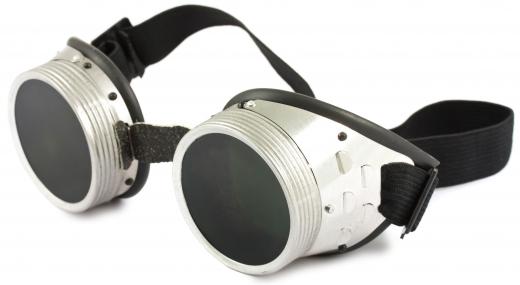An arc welder is a device used to join two or more pieces of steel together. By using electric current, the arc welder generates enough heat to actually melt the pieces of steel. A welding rod or electrode is placed in the positive side of the arc welder cables in what is commonly called the stinger, while the negative, or ground, cable is attached to the steel with a clamp. Striking the electrode on the steel generates a spark, and as the steel melts, the electrode melts into the molten puddle of steel and joins the pieces together.
The welding rod is covered with a material known as flux. As the rod melts, the flux creates gases which shield the weld from contaminants and allow the welds to cool without being compromised. Once the weld has cooled, the slag from the welding process must be chipped from the weld and wire brushed to ensure the weld is presentable. It is wise to never watch an arc welder in use, as the flash from the welding process is as bright as the sun. Serious eye damage can result from looking at a weld without eye protection.

The traditional arc welder is slowly, but surely, being replaced by the wire welder. The Metal Inert Gas, or MIG, welder uses a shielding gas that protects the weld in place of a coated welding rod. The MIG also varies from the arc welder in that no welding rod is used. The MIG welder uses a spool of special wire that is fed into the weld puddle by an electric motor. In arc welding, the welder must be sure to move his hand downward as the welding rod melts away. This is done to keep the distance from the end of the rod to the weld puddle the same length, resulting in a uniform weld depth and penetration.

MIG welding, unlike an arc welder, feeds the wire off of the spool so the welder need only focus on moving his hand in the direction of the weld. Settings on the wire welder allow the welder to fine-tune the characteristics of the machine. The tungsten inert gas, or TIG, welder resembles the arc welder in that a wire welding rod is dipped into a melted weld pool created by heating the steel with a welding torch. The wire rod is melted off, creating a weld bead and the process is repeated until the entire weld is complete.
